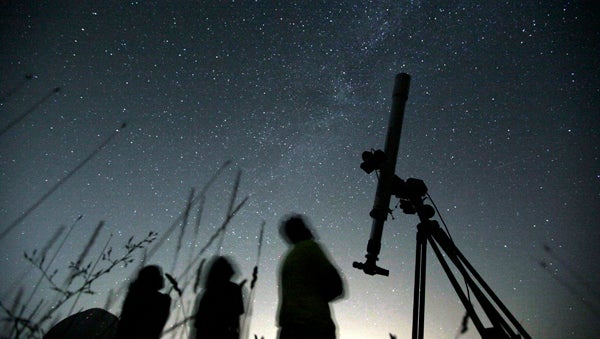Perseid meteor shower to dazzle stargazers this weekend

The annual Perseid meteor shower is promising to put on a dazzling sky show. Astronomers say up to 100 meteors per hour are expected to streak across the sky during the shower's peak. (Petar Petrov/AP Photo, file)
It’s time to head to a dark location, beach chair in tow, and gaze up at the sky as the most active meteor shower of the year is here.
The Perseid meteor shower peaks Sunday and Monday, with stargazers expected to see more than 50 shooting stars before dawn.
The annual event “probably ranks as the all-time favorite meteor shower of the year,” Bruce McClure writes in an EarthSky.org report.
The most active time to witness Perseid meteors streaking across the sky is between midnight and dawn, with the highest frequency occurring toward daybreak.
But don’t fret if the prospect of staying awake all night is too much to handle, as you may witness a spectacular sight during the evening hours.
“As a general rule, the Perseid meteors tend to be few and far between at nightfall and early evening. Yet, if fortune smiles upon you, you could catch an earthgrazer– a looooong, slow, colorful meteor traveling horizontally across the evening sky. Earthgrazer meteors are rare but most exciting and memorable, if you happen to spot one. Perseid earthgrazers can only appear at early to mid-evening, when the radiant point of the shower is close to the horizon,” according to the EarthSky.org report.
Mike Black, a photographer who hails from Belmar, NJ, tells Newsworks that no special gear is required to view the celestial show.
“In fact, you don’t want a telescope or binoculars. You just want your eyes,” Black says.
The former high school science teacher and well-known photojournalist provides the following insight on where and how to view the light show.
Find a unobstructed location that permits wide sky viewing.
Get away from lights. In New Jersey, light pollution can be severe. There are, however, locations with dark skies. The fewer the lights, the better.
Get a deck chair and your favorite beverage, and sit back and relax. Be patient. With light pollution, you won’t see every meteor, but you can see quite a few.
Let your eyes adjust. It can take several minutes for your eyes to adjust to the dark. You should not use any electronic devices.
Your chances of seeing meteors increase as the night proceeds. After midnight and before dawn, our position on Earth is “facing” the meteor stream and increases the chances of a meteor entering the atmosphere. There is no single best time to view but the dark hours before dawn are optimal.
So if you are unable to head to the Pine Barrens or a dark beach, don’t worry.
“For most readers, simply getting away from street lights will be good enough,” Black advises.
Happy stargazing!
WHYY is your source for fact-based, in-depth journalism and information. As a nonprofit organization, we rely on financial support from readers like you. Please give today.

